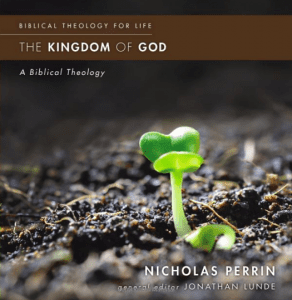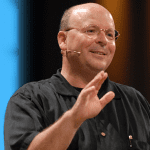 To talk kingdom is to talk God and to talk story, but then we also have to talk community. Nicholas Perrin discusses the kingdom community in three separate chapters. Notice this: most discussions of kingdom are inadequate on community so his choice is deeply appreciated. We are looking at his new book: The Kingdom of God: A Biblical Theology.
To talk kingdom is to talk God and to talk story, but then we also have to talk community. Nicholas Perrin discusses the kingdom community in three separate chapters. Notice this: most discussions of kingdom are inadequate on community so his choice is deeply appreciated. We are looking at his new book: The Kingdom of God: A Biblical Theology.
Where to begin this theme? With John the Baptist, Jesus’ “warm up act” who quickly deferred to Jesus. He sums up the big picture about J-B:
First, in declaring a state of eschatological emergency, the Baptizer effectively reconfigured the boundary lines of Israel.
Second, as part of his proclamation of the kingdom, John identified Jesus as the messianic catalyst who would turn Israel’s kingdom dreams into reality.
Third, in preparation for the kingdom and its Messiah, the Baptizer held members of his newly formed community to a radical ethical standard.
Fourth, as John entered into his own hour of dark suffering, he attested, unwittingly, to an experience that would later extend to Jesus and his followers: persecution and suffering.
Drawing attention to Isaiah 40:3 and Malachi 3:1, John/Mark … “For Malachi and Isaiah, as presumably for Mark, the coming of the kingdom coincides with the formation of a newly established worshiping community, where God would be properly honored as king. Both Isaiah and Malachi look forward to not just the act of worship (that had been happening all along even up to Jesus’s day), but true worship under all the right conditions.”
So, he deepens his earlier sketch with John’s fourfold mission:
Identifying the Kingdom Community (Mark 1:4-8)
Identifying the King (Mark 1:9-11)
Identifying Community Expectations (Luke 3:7-14)
A. The Goal of Bearing Fruit (Luke 3:7-10)
B. Achieving the Goal (Luke 3:11-14)Identifying the Community’s Challenge (Matthew 11:1-13)
He offers then a sketch of the parable of the sower as the emergence of the kingdom community. A story about one soil and one sower. Attentiveness, response, flourishing — these are the themes. He preaches:
The parable also challenges strands of evangelical culture that put heavy emphasis on one’s personal decision for Christ without attaching equal weight to ongoing discipleship. As my history-of-Christianity friends could detail far better than I, there are historical reasons explaining how evangelicals got to a place where we began to care more about “decisions for Christ” than the fruit that is supposed to yield from such decisions. But such explanations are no excuse for continuing in unbiblical thinking. While far too many rest satisfied with achieving the initial decisions represented in the second, third, and fourth soils, God is satisfied with only the last of these. The church is looking for warm bodies to fill empty seats: God is looking for fruit.
But it is about christology, too. If this parable’s imagery connects to Isa 55:10-13, then there is eschatological realization in the messenger, Jesus. Perrin, however, walks an ambivalent line between kingdom and church, not wanting them to be identical but in the end I’m not sure he separates them as much as he thinks. Here are his words:
The church is not coextensive with the kingdom but is rather the divinely sanctioned space in which the kingdom normally takes shape.
My question emerges from this chapter: if we are talking community, who is the community of the kingdom and who is the community of the church? He says, “… church (an empirical, more-or-less static reality, where we know who is “in” and who is “out”) and kingdom (a dynamically unfolding eschatological reality in the making).” But is not the church a “dynamically unfolding eschatological reality in the making” and the kingdom — if it really is a community of flesh and blood people “an empirical, more-or-less static reality, where we know who is “in” and who is “out””)?












